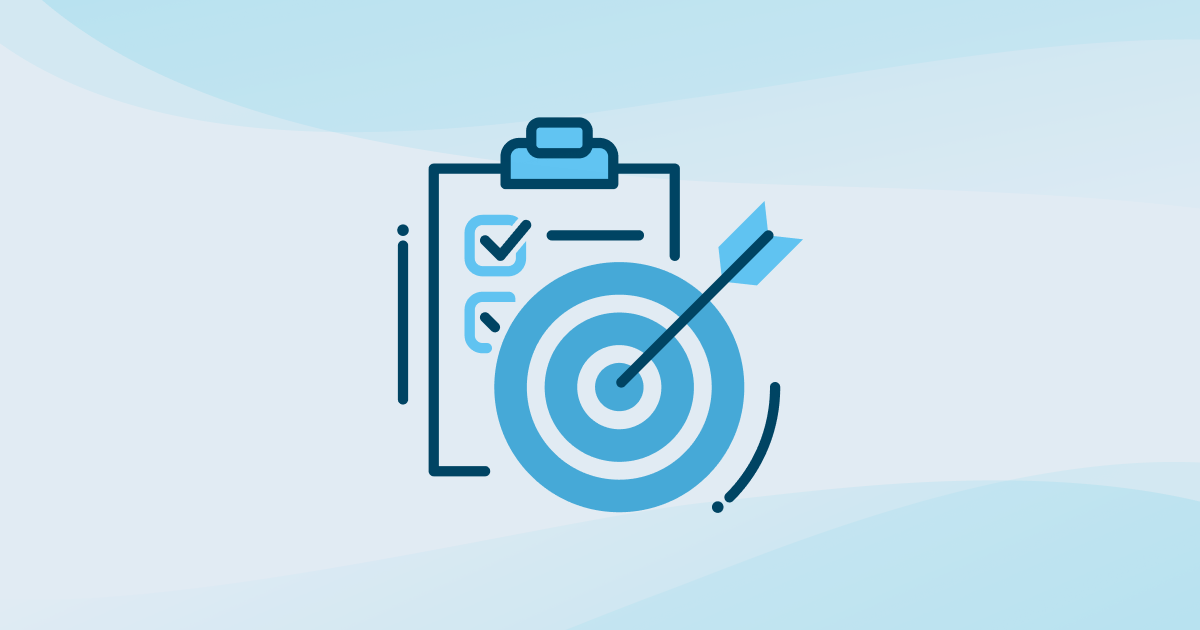As part of a youth group activity when I was a teenager, we visited an army base not far from where I lived. The reason for our visit was to take part in some team building and physical activities. We were to cross an obstacle course, help each other climb a wall, and repel down a five story tower. Before we engaged in the activities, we were informed of the potential risks and we spent some time planning out what we were to do without getting injured. Due to our plans, we accomplished our activities and were able to participate without any injuries. We planned for the risks and helped create an environment of success.
Forex trade plans are no different
Making plans to manage risk is essential in many ventures. There is always going to be a risk of losing a trade or being wrong. In trading there is no way to avoid losses. This is why having a Forex trade plan is so important if you want to become a successful forex trader. With a plan, you can manage your risk, you can manage your losses, and you can manage your emotions that come with those potential risks.
Unfortunately, most traders do not trade with a plan. Traders who actually write out their trading plans are giving themselves a better chance to succeed than those who do not. Most of the time, those who do not write out their trade plans are because they do not know how.
There are many ways to develop a Forex trade plan, but I have found that if a trader includes these components, they will be off to a great start to managing their risk:
- Price Management
- Risk Management
- Trade Management
- Self Management
Each of these components breaks down your trading plan into manageable segments and each is important.
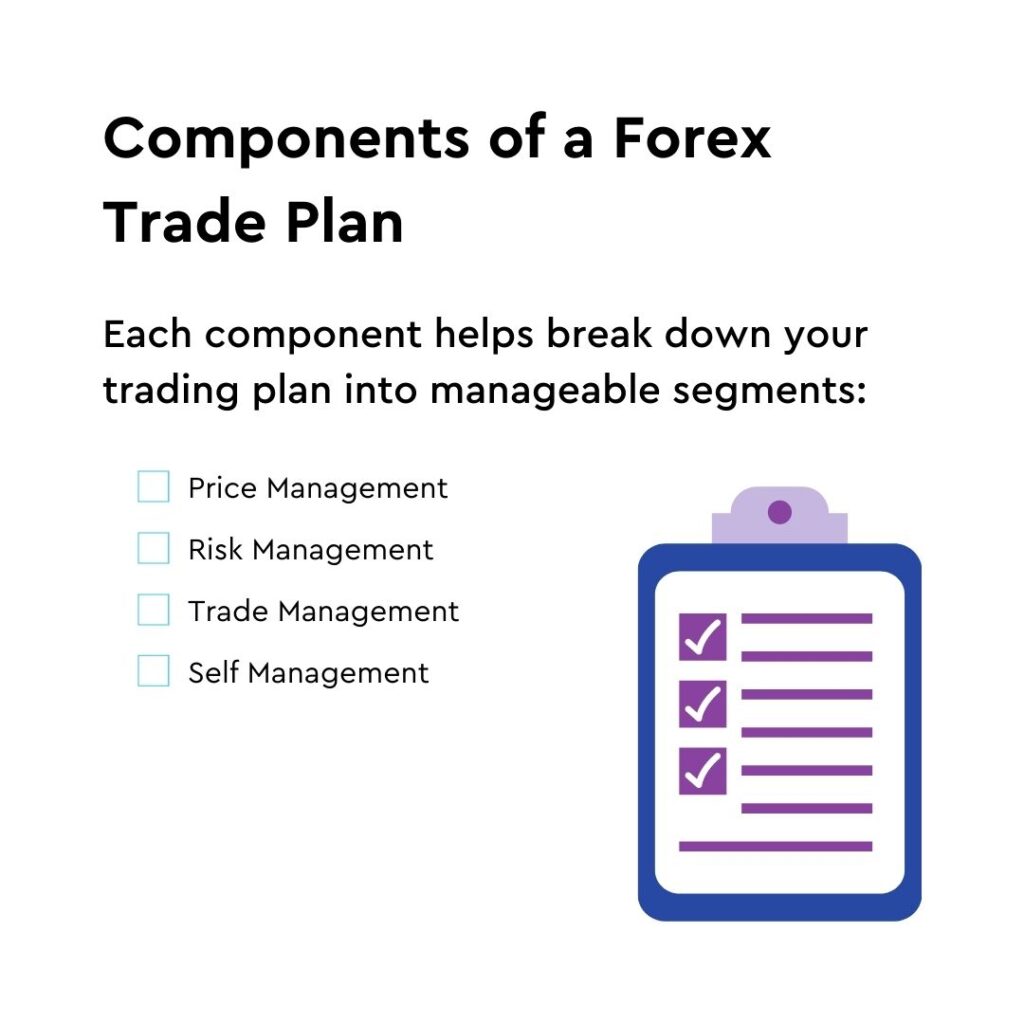
Price Management
Price Management is the most common and the most focused on of all the segments. This is where a trading strategy is found. Price management answers the question “where do I get in?” “where do I enter the market, at what price?” In order to help traders decide at what price to enter their market, they can use any number of items to help them arrive at their price entry. They include but are not limited to:
- The use of one or more indicators
- The use of support or resistance, supply or demand areas
- The use of pivot points
- Volume or momentum
- Price action and price patterns
Again, there is no right or wrong way. Any trader can find any indicator or tool to help them develop a trading strategy.
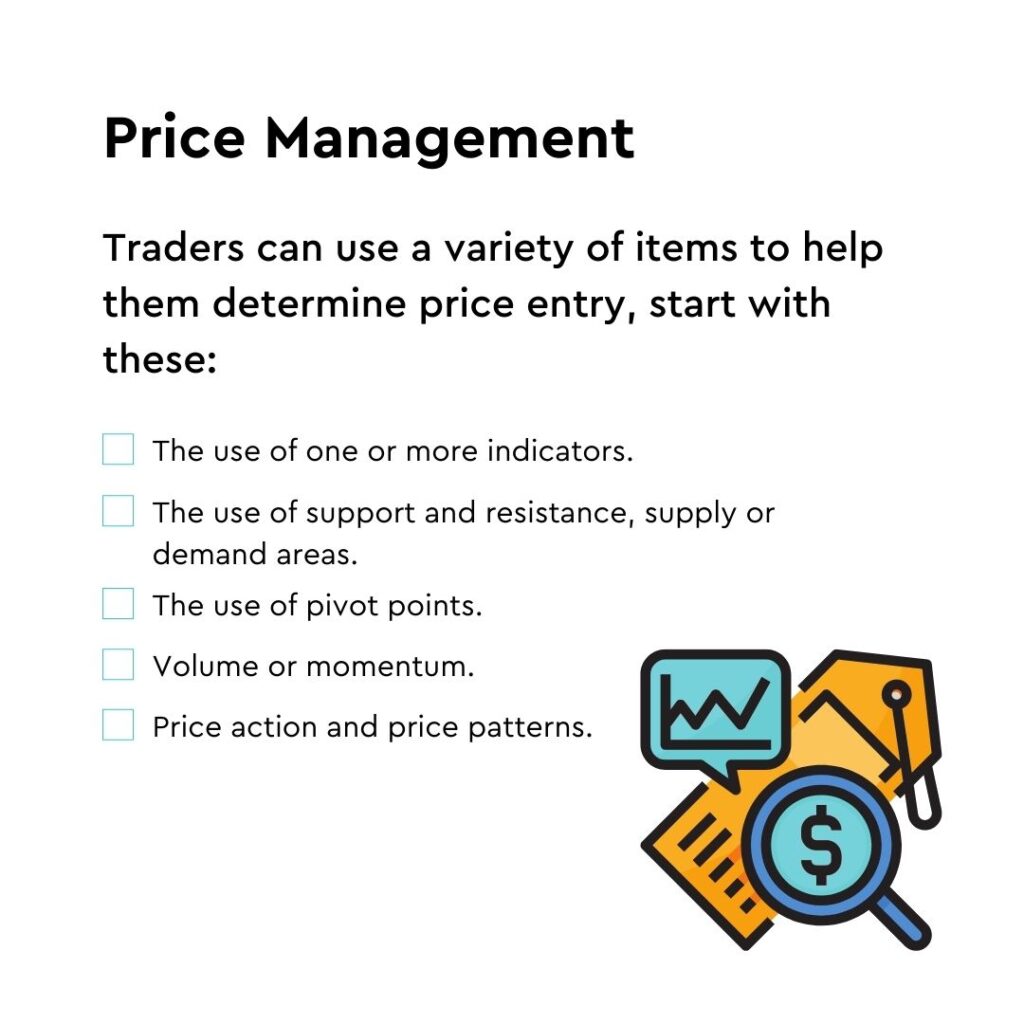
Risk Management
Unfortunately, for many traders price management is the only component they focus on. “Just give me the best one or two indicators and I’ll be on my way to wealth and glory!” The reality is that risk management is at the core of most trading plans. Risk management answers the questions to:
- How much can my account afford to risk?
- What is (the) best risk to reward ratio for my trading style?
- What would be the most effective leverage to trade with?
- What is my maximum risk per trade or per trading session?
These questions are essential to ask yourself as you develop your trade plan. Without these, your plan has no foundation.
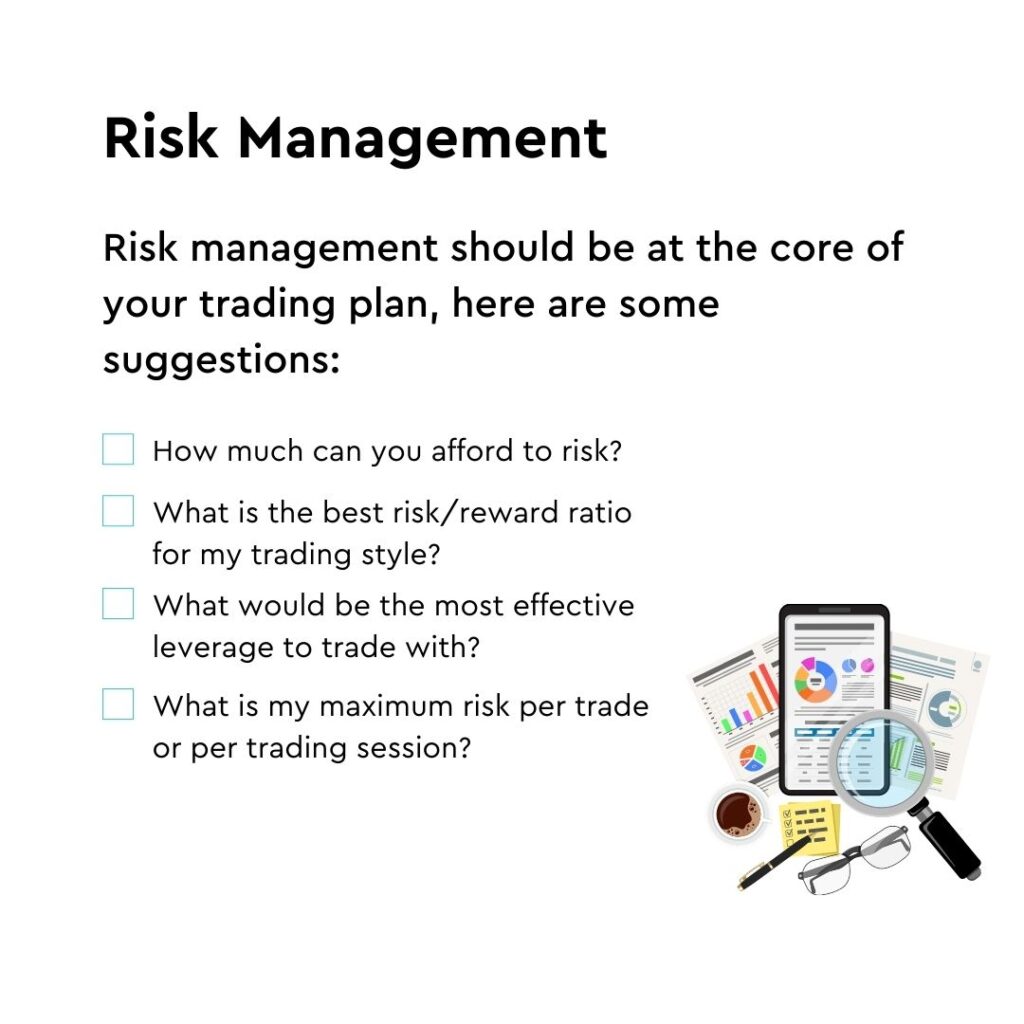
Trade Management
Trade Management helps you develop actual trading skills and techniques that help you be a more consistent trader. These skills include:
- Scaling in – entering into a position at different prices
- Scaling out – exiting out of a position at different prices
- Hedging – entering a position on the opposite side of the market
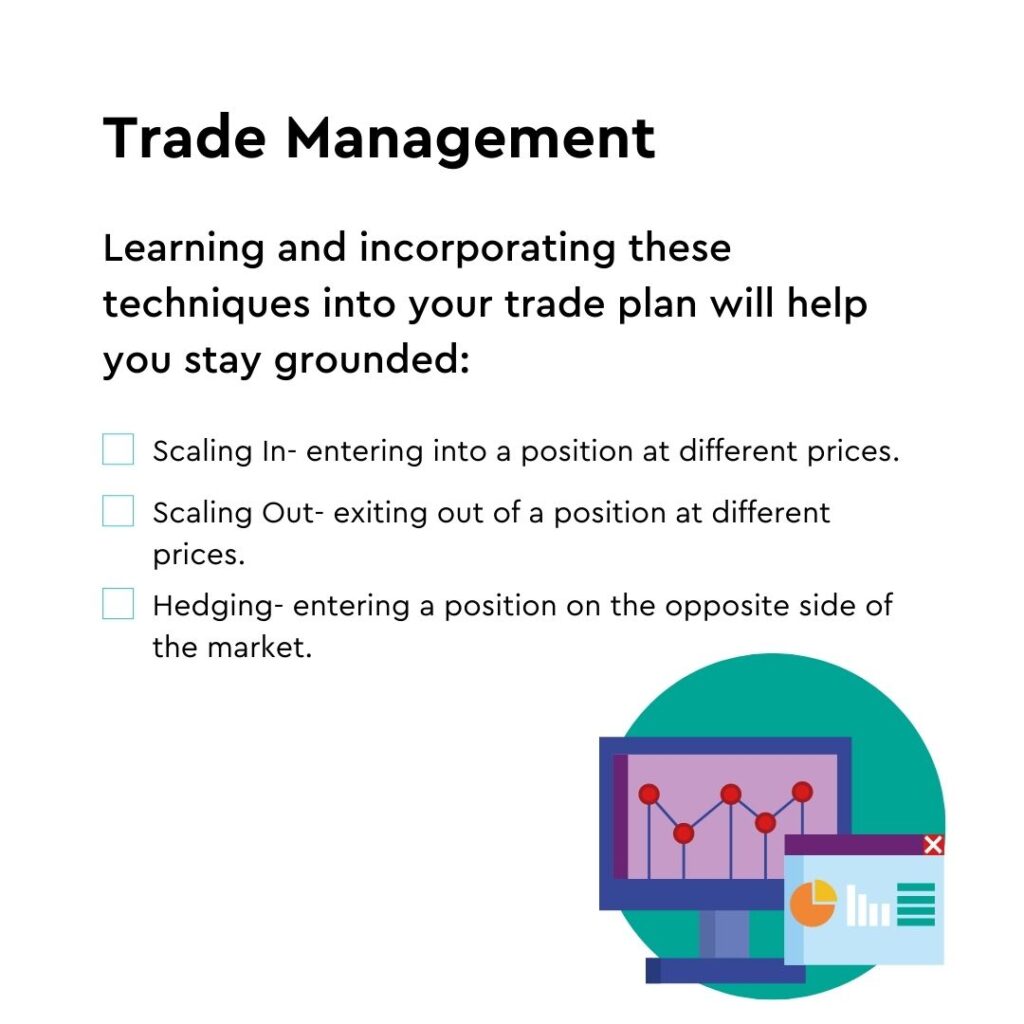
Learning and incorporating these techniques into your trade plan will help you stay grounded in a trading process rather than outcome. They also enhance your ability to manage the risk of your trades.
Self Management
Self Management is the glue that holds all the rest together. If you do not learn to manage yourself, how do you expect to manage the rest of your plan? It’s important that you learn to manage yourself. This can be done through:
- Understanding your trading beliefs
- Developing a Trade Routine
- Learning to develop Emotional Intelligence
- Learning to master your trade losses, and defeats

Learning to manage yourself is sometimes the hardest part of becoming a successful trader, but it is also the most rewarding. Once you incorporate self management into your Forex trade plan, it will be easier to execute consistently and with discipline.
Whether you’re going through an obstacle course, repelling off a cliff or trading the forex markets, you will mitigate a lot of the risk by having a great plan!
Your Next Trade
Going forward, focus on creating a trade management plan. Make sure to write out and stick to your plan! To get started:
- use one of the 5 price management strategies when entering and exiting a trade.
- determine an acceptable level of financial risk you’re willing to take.
- write out the emotions you could potentially feel whether you win or lose and how those emotions could affect your next trade.
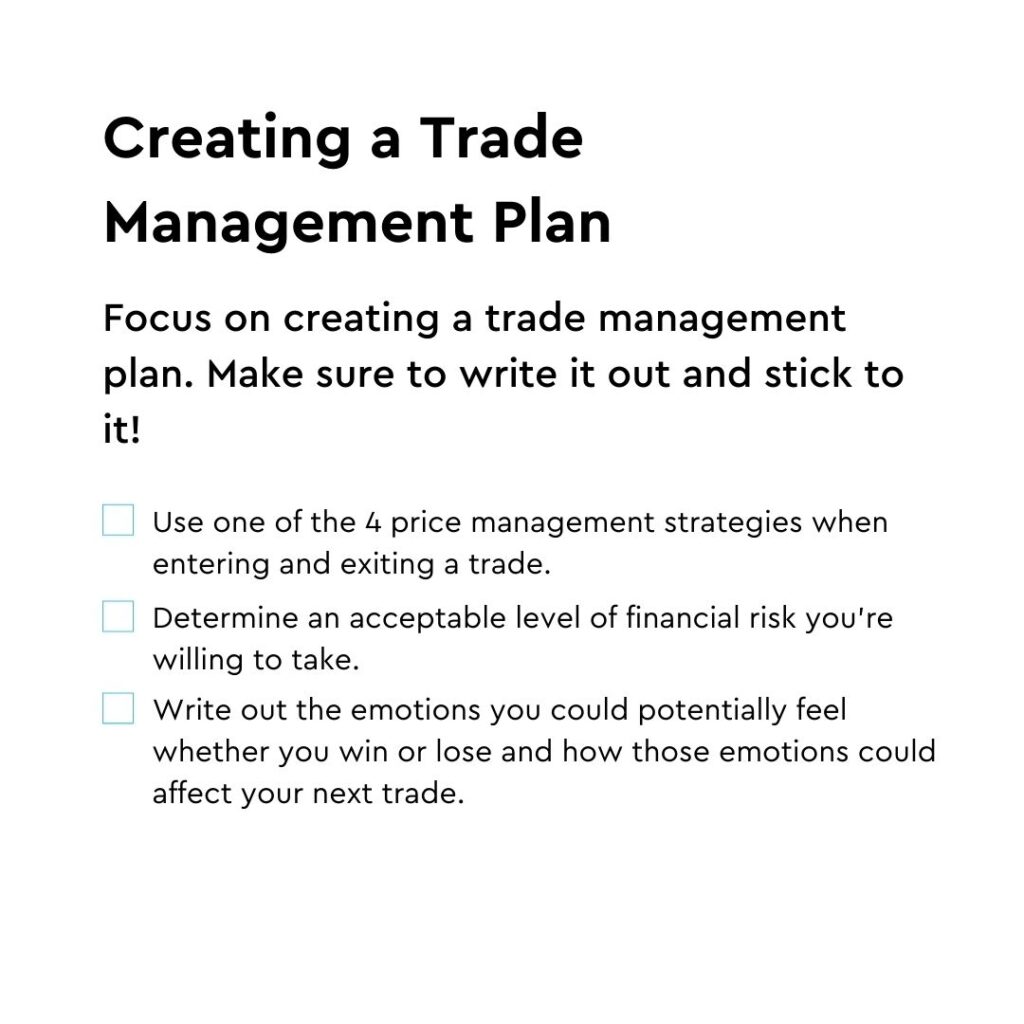
This is a simple process that will help you better organize key components to being a successful trader.
